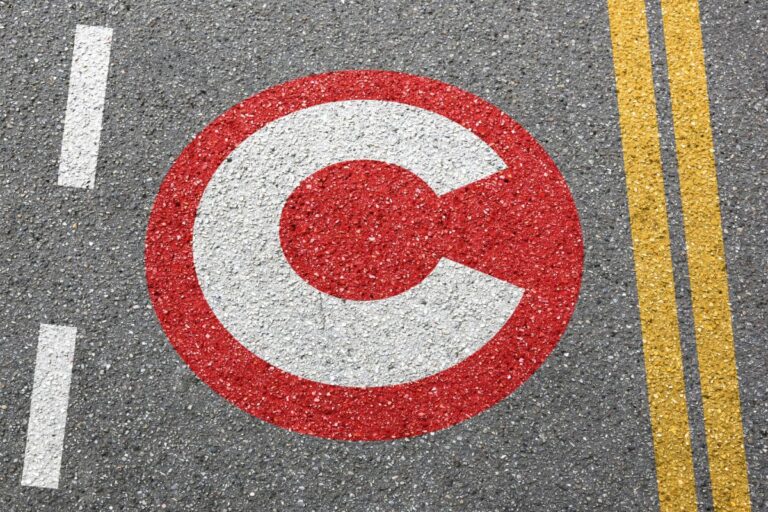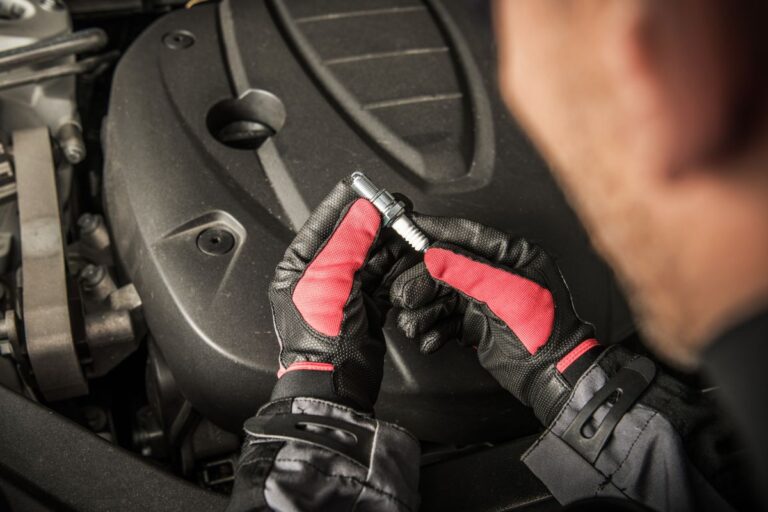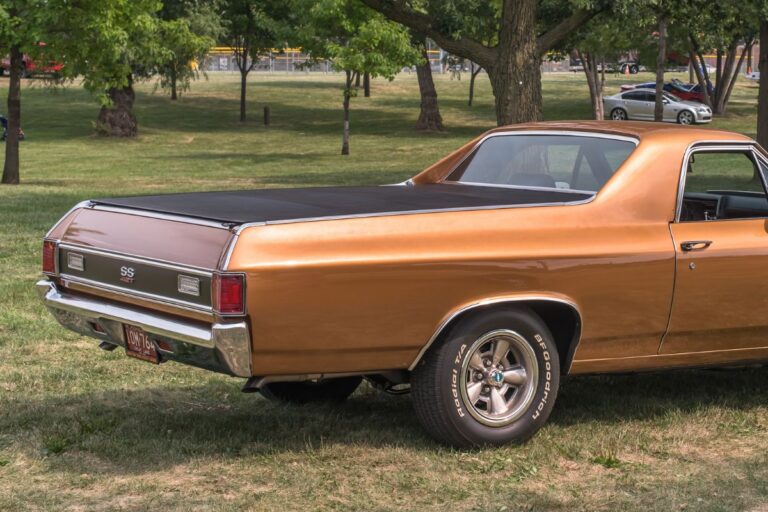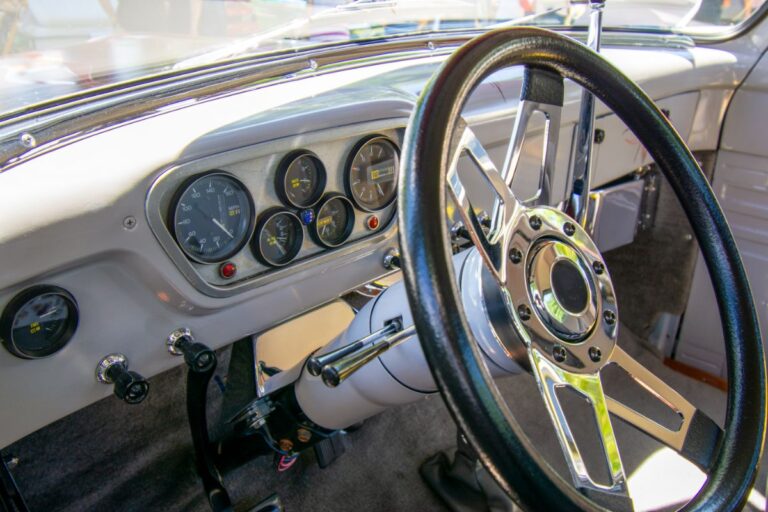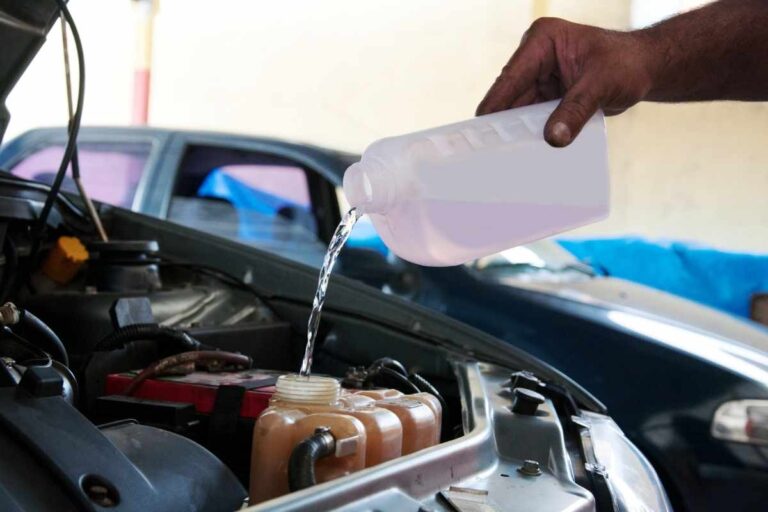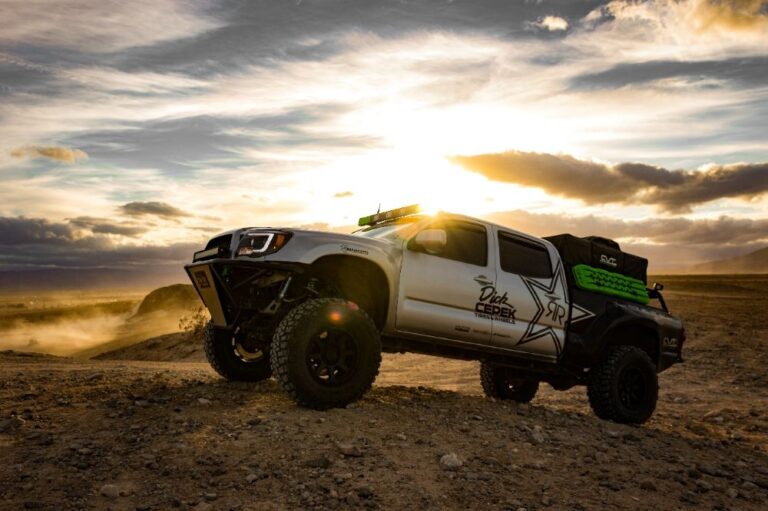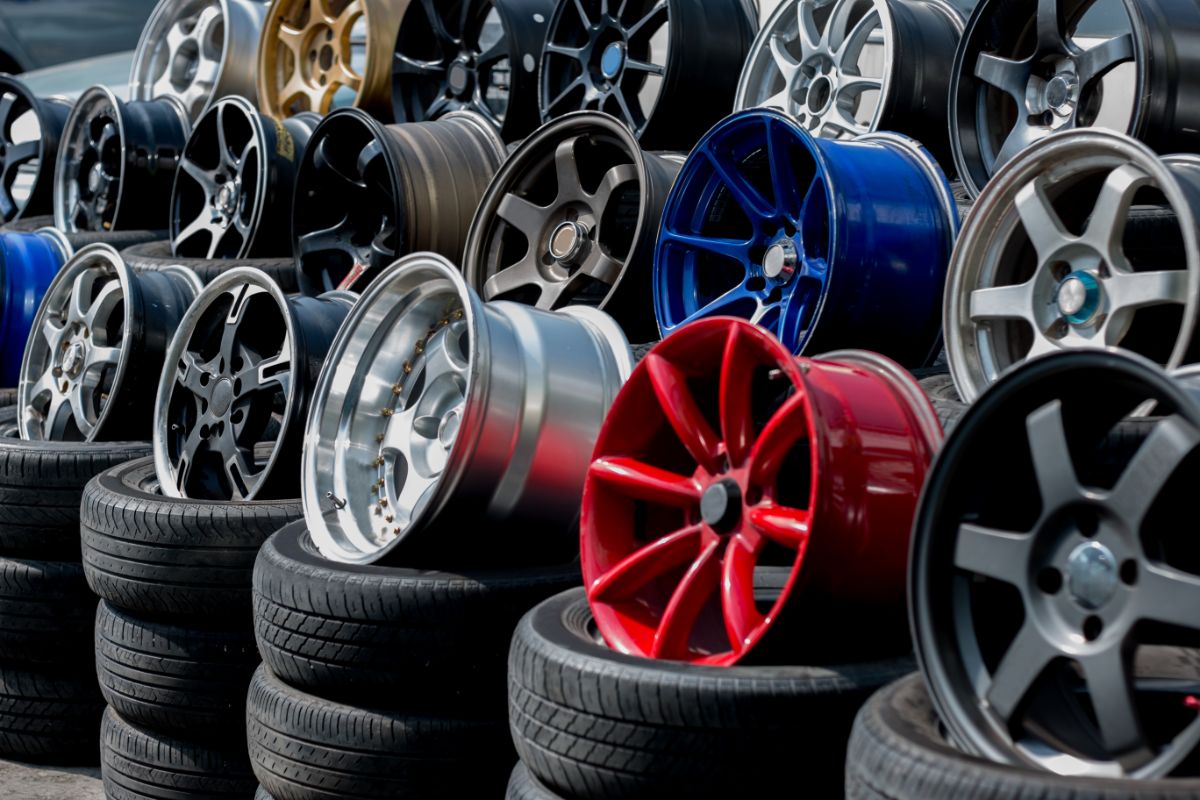 You may not spend much time thinking about wheels. Not a lot of people do. As long as they do their job, there aren’t a lot of reasons to think about them. That is, until it’s time to look for new ones.
You may not spend much time thinking about wheels. Not a lot of people do. As long as they do their job, there aren’t a lot of reasons to think about them. That is, until it’s time to look for new ones.
The wheels are one of the most important parts of a car. Until somebody invents hover cars, we can’t drive anywhere without wheels.
So when you start looking for new wheels for your car, you want to put a lot of thought into them. And the sheer amount of options can get overwhelming.
Still, once you know what you need, you should be able to narrow your choices quickly. The right tires will depend on your climate, your lifestyle, and even aesthetic choices.
Types of Wheels for Cars
Some people use the words “wheel” and “tire” interchangeably, but wheels and tires are two separate things. A tire is an inflatable rubber “shell” that goes around a wheel.
The wheel itself is the metal inner hub. Still, you could also say that a car’s wheel consists of both the hub and the tire. Because both parts are important, we’ve included information on different types of tires below.
For now, though, let’s just look at the metal part of the wheel. Wheels come in a lot of types. You’ll find different materials, finishes, and other variations.
Wheel Materials
Car wheels are usually made from one of three things: alloy, steel, or carbon fiber. All of these options have advantages and disadvantages. Your choice will depend on your priorities for your car.
1. Steel Wheels
First, there’s steel, which is the most common type of wheel on a car. These are the wheels that people buy when they just want something basic that will get the job done. And steel will definitely get the job done.
It’s tough and very durable, so it works in all seasons. That includes the winter, even if you live in a particularly cold climate. And steel is cheaper than other wheel options, so it helps car owners to save money.
If you’re a car enthusiast, choosing steel might let you spend that extra money on other parts of the car. Your wheels may not stand out from the crowd, but you could make up for it with a new trim.
And of course, if you’re not a big car aficionado, steel wheels probably have everything you want for your vehicle. Like anything else, though, steel does have some downsides.
If you want something other than the standard choice, then steel may not fit the bill. Steel is also a very heavy material, so it causes some drag.
That’s why when car owners want quick acceleration, they often skip the steel options and look at alloy wheels instead.
2. Alloy Wheels
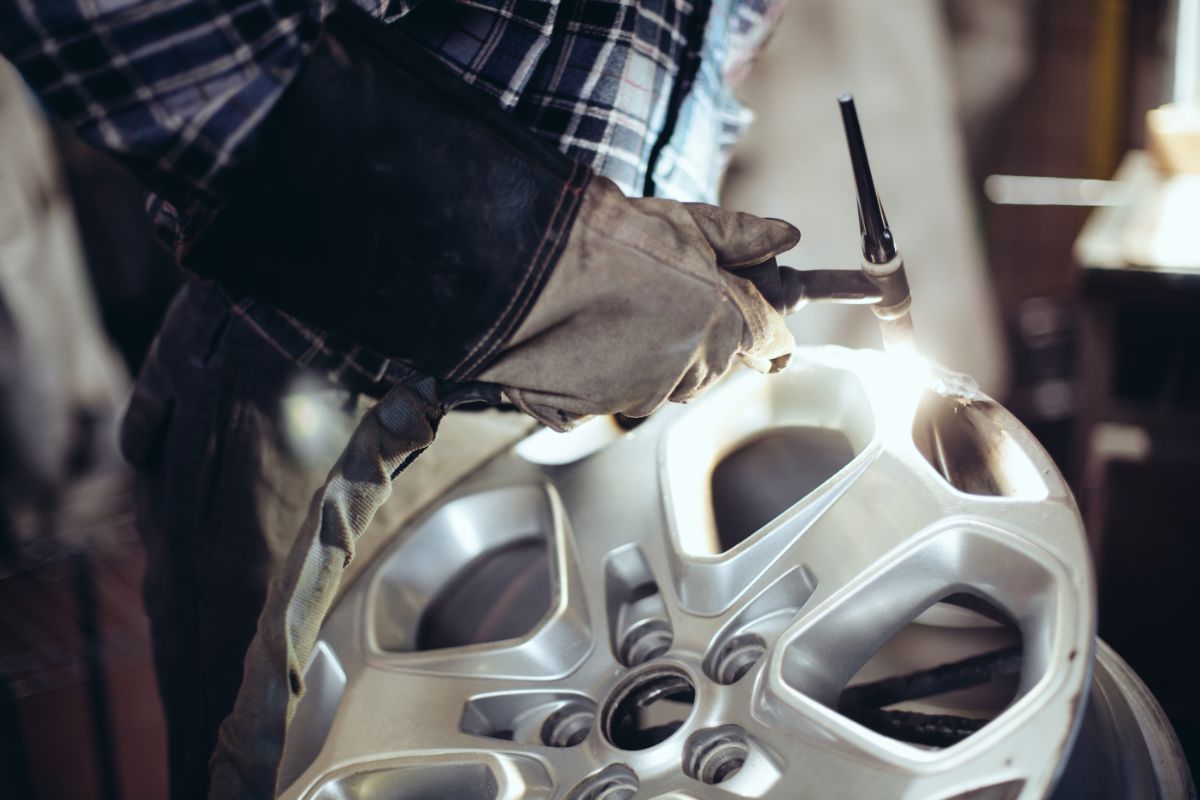
An alloy is a mixture of metals. In car wheels, that mixture usually includes aluminum and nickel, or aluminum and magnesium. Because aluminum is the primary metal in these wheels, they’re sometimes just called “aluminum.”
Where steel wheels fall short, alloy wheels shine. Of course, the opposite is also true. Where alloy doesn’t work, steel has what it takes to do the job. Alloy wheels are lighter than steel, so they don’t slow down acceleration.
They can also provide a more agile driving experience. Many drivers choose alloy for collectible cars rather than the cars they use from day to day. The lightness gives the car a smooth drive, so they can make a good choice for cars that are only driven on special occasions.
However, because they are lighter than steel, they don’t provide the same durability. In winter, for instance, alloy wheels may show more wear and tear than their steel counterparts.
They may even (literally) crack under pressure. Of course, this may not be a concern for you if you live in a warmer climate.
Finally, alloy wheels cost more than steel wheels. Granted, they can also save you some money in the long run. With lighter wheels, you’ll need less fuel to keep your car moving forward.
But they do have a high upfront cost, which can dig into your car modification budget.
3. Carbon Fiber Wheels
Carbon fiber wheels don’t weigh much, so they help with acceleration. And since they’re much stronger than alloy, carbon fiber wheels can handle more intense conditions.
Basically, carbon fiber wheels have all the best traits of alloy and steel but none of the weaknesses. However, carbon fiber wheels are even more expensive than alloy wheels, which are already pricey.
Plus, if a carbon fiber wheel does get damaged, the owner can’t repair it. They’d have to replace it entirely. Steel and alloy wheels, on the other hand, can be repaired.
Forged vs Cast Wheels
Car wheels don’t just have different material options. They also come in different styles of construction. You can find several construction styles: forged, cast, pressed metal, and flow formed.
1. Forged Wheels
Aluminum wheels are often forged wheels. During the forging process, a piece of metal is heated and then pressed into shape. This process creates lighter, more durable wheels, which is why some car owners prefer this option.
However, forged wheels are a lot more expensive than cast wheels. They make a better choice for car enthusiasts than for day-to-day drivers.
2. Cast Wheels
Cast wheels come from liquified metal. Once the metal is melted, it gets poured into a wheel-shaped mold, where it hardens and cools. Cast wheels aren’t as strong or lightweight as forged wheels, but they’re also not as costly.
For most car owners, cast wheels work perfectly well.
3. Pressed Metal

Many steel wheels are formed with the pressed metal method. Basically, the technician welds the wheels out of sheet metal. This is one of the most common forms of wheel construction. It’s not particularly flashy, but it works well for a lot of cars.
4. Flow Formed

At first, flow forming works exactly like casting. The metal is liquefied and poured into a cast to create the wheel’s shape. Then the barrel of the wheel is heated and spun until finished.
This process is essentially a hybrid between casting and forging, so the resulting wheels have a lot of benefits of both. They’re also lighter and less expensive than forged wheels.
Types of Wheel Finishes
Car wheels have finishes that protect the metal. Finishes also add an aesthetic touch, letting drivers show off their style.
1. Clear Coat Finishes
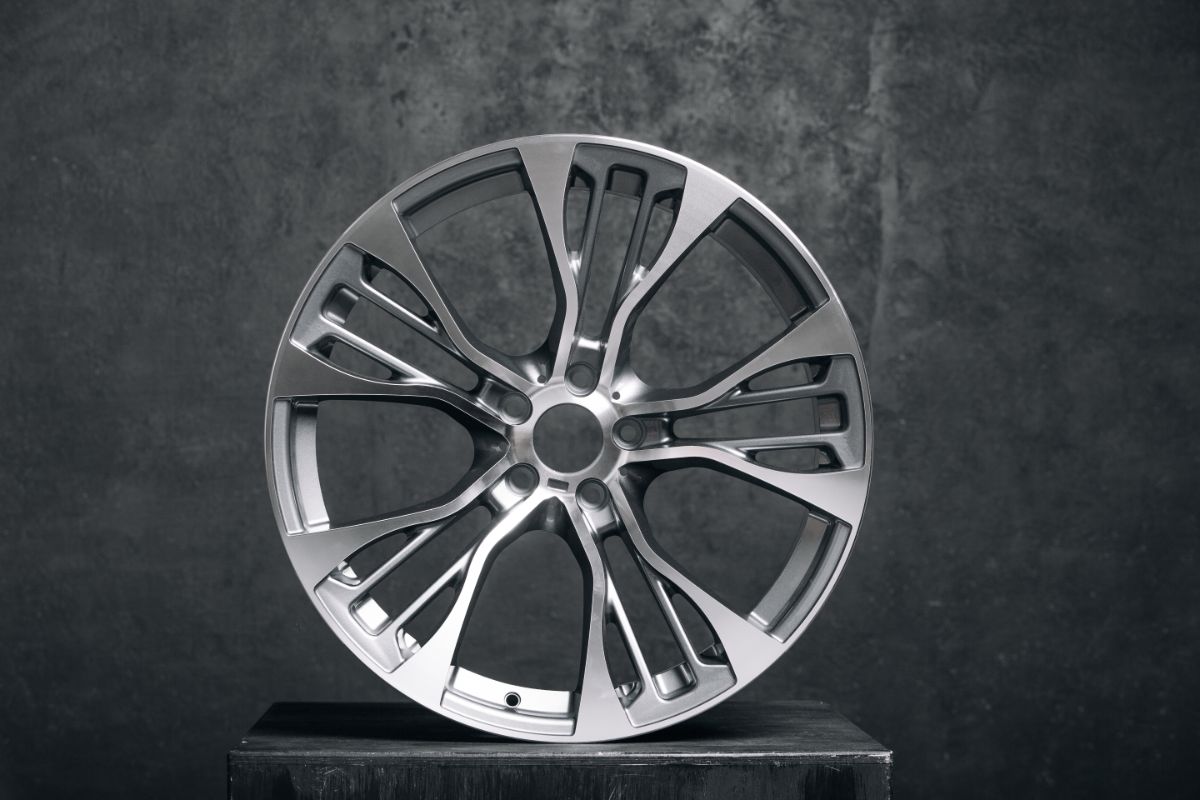
Clear coat finishes are simple and straightforward. They add shine to the wheel’s metal. They occasionally get scuffed, which is the one downside to these finishes. However, you can touch up your clear coat finish fairly easily if it does get damaged.
2. Painted Finishes

Drivers who really want their cars to stand out will often go for a painted finish. A lot of sports cars have this option on their wheels. Painted finishes usually also have a layer of clear coating on top to protect the paint job.
If painted wheels have the look that you want, the only real downside here is the extra expense.
3. Powder Coating Finishes

Powder coat finishes have gained a lot of popularity in recent years. Much like paint, powder coating adds color to a car’s wheels. The difference comes from the material itself and the application process.
Powder coating is a dry substance that gets sprayed onto the metal. Then, the technician uses heat to cure it. You might choose a powder coating if you want color on your wheels but also want something brighter than paint.
Powder coating also offers more durability than most other finishes. It can last for years at a time. However, because powder coating requires a professional, it’s more expensive than other coating options.
4. Chrome Plating
Why do classic cars have such bright and shiny wheels? It’s because of chrome plating. Chrome plating gives wheels a distinct appearance.
Some car owners choose this option when they want their wheels to stand out but don’t want to add a specific color. If you want to see your reflection in your car’s wheels, chrome plating will give you what you want.
However, chrome requires a lot of care and upkeep. If you choose chrome, you’ll need to keep an eye on your wheels. Chrome scratches fairly easily.
Chrome plating can also develop pits and lose some shine as a result. But for wheels that don’t get a lot of wear and tear — like vintage and classic cars — chrome plating can make a beautiful choice.
What About the Tires?
Tires are just as important as the main part of the wheel. And just like wheels, tires come in different types. Car tires are built for different seasons. When you look for tires, think about the climate where you live.
Do you get a lot of harsh winters? Hot summers? Having the right tires can make a big difference in your driving experience. Not only will they give you a better, smoother ride, but they can also make your drive more safe.
1. Summer Tires
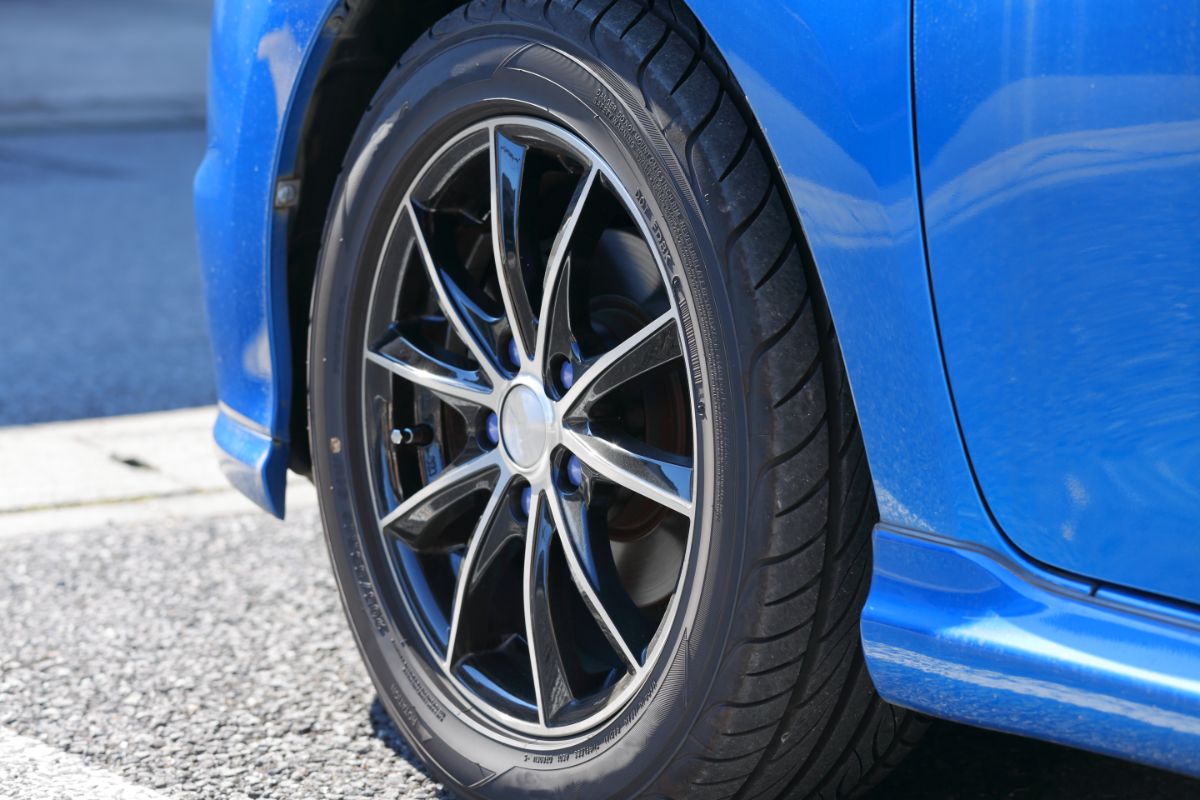
Summer tires are designed for hot weather. They handle rising temperatures and dry conditions very well. They also handle summer rain and humidity. Summer tires can work very well for cars in the southern parts of the US.
If you live in a climate where winters rarely reach freezing temperatures, summer tires may suit your needs.
However, if you live in a place that does get cold winters, you should only use summer tires in the summer. These tires don’t stand up to snow, slippery roads, or other winter conditions.
2. Winter Tires

Winter tires are also called “snow tires.” They’re designed, of course, for winter weather conditions. They’re softer than summer tires, so they don’t become rigid when temperatures drop.
They also have deeper grooves, which gives them a better grip on slippery roads. In northern climates with long winters, a lot of people keep a set of summer tires and winter tires. When the weather gets cooler, they have their tires switched.
3. All-Season Tires

All-season tires are built to handle both winter and summer and everything in between. They work for both wet weather and dry weather.
In terms of traction and grip, they’re about halfway between winter tires and summer tires. However, they’re not meant for extreme winters. They can handle some snowy conditions as long as the snow is light and doesn’t last long.
In places like Texas and New Mexico, all-season tires can handle a lot of road conditions.






